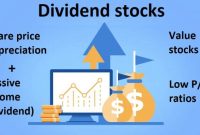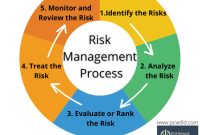An emergency fund is an important part of maintaining financial security. Knowing that you have a financial cushion in the event of unforeseen events can help you feel secure when it comes to you and your family’s financial wellbeing. But how do you create and maintain an emergency fund?
Setting aside enough money to create an emergency fund, while still meeting your other financial obligations, is one of the most important steps in ensuring financial security. It’s important to develop an emergency fund plan and figure out how to save more money each month. This article will cover the basics of building and maintaining an emergency fund so you can have the financial security you need for yourself and your family.
Why Create an Emergency Fund?
An emergency fund is a type of savings fund that sets aside a certain amount of money in case of an emergency. It’s designed to help you and your family financially during periods of unemployment, job loss, medical emergencies, home repairs, and other unexpected financial hardships.
Creating and maintaining an emergency fund is an important part of managing your financial security. It provides a cushion to help cover unexpected costs without having to burden yourself or your family with additional debt. It also gives you peace of mind knowing that you have a financial safety net in place should something unexpected happen.
Here are a few of the reasons why it’s important to create and maintain an emergency fund:
- It helps you manage costs during job loss or periods of financial difficulty.
- It can help you pay for medical bills, home repairs, or other unexpected expenses.
- It provides financial stability and security for you and your family.
- It allows you to be prepared for emergencies through proactive savings.
- It allows you to pay for expenses in cash and not have to rely on credit.
Creating and maintaining an emergency fund can be an important part of your financial security. It can be a financial lifeline during periods of unemployment, job loss, or other unexpected circumstances. Setting aside even a small amount each month can help you build your emergency fund and ensure you and your family are financially secure.
How to Start Saving for an Emergency Fund

Saving money can be hard when you have multiple expenses. But setting aside an emergency fund is an important goal if you want to ensure your financial security. Having a separate fund to cover unexpected expenses can save you the hassle of taking out high-interest loans or dipping into your regular budget. Here’s how to start an emergency fund:
1. Determine How Much to Save
Figuring out how much to save for an emergency fund depends on your individual financial goals. Generally, experts advise setting aside 3-6 months of living expenses. This number can be adjusted based on your savings rate and whether you have an employer-provided safety net, such as health insurance or a retirement plan.
2. Set Up an Emergency Fund Account
Once you have determined your goal amount, it’s time to set up an emergency fund account. Most banks offer separate savings accounts for emergency funds. These accounts typically have higher interest rates than regular savings accounts, and they also allow you to set up automatic transfers so you can easily add money to your fund. You can also consider investing your emergency fund in stocks or mutual funds, although it is important to note that these investments can carry a certain level of risk. If you do choose to invest, make sure you understand the fees and associated risks.
3. Start Saving Regularly
Starting an emergency fund is no different than any other savings goal. The key is to set up a regular savings plan and stick to it. Start by setting aside as much money as you can each month. If you start feeling discouraged, remember to be patient and flexible with yourself. It takes time to get used to a new savings habit, and setting up automatic deposits can help make the process easier. As you save more, consider setting a goal of increasing your savings rate. This can help you reach your goal even faster.
4. Set Up Savings Alerts
Savings alerts can help you stay motivated and track your progress. Many banks now offer text or email notifications when you reach a certain savings goal or when your account balance dips below a certain amount. These alerts help you stay on top of your financial plan and help you stay on track to reaching your emergency fund goals.
5. Track Your Progress
Once you have set up your emergency fund account, it’s important to keep track of your progress. You can do this by regularly calculating your savings rate and tracking your spending. Don’t be discouraged if your progress is slow at first. Building an emergency fund takes time, and it’s important to stay focused on your goals. If you keep an eye on your spending and adjust your budget as necessary, you’ll be well on your way to building a secure financial future.
Building Your Emergency Fund Balance
An emergency fund is essential for any individual or family planning for financial security. Having one can help you stay afloat when unexpected expenses arise, allowing you to avoid taking on debt or dipping into your savings. In order to get ahead, it’s important to know how to build and maintain an emergency fund balance.
Creating an Emergency Fund
To get started, the first thing you’ll want to do is create a separate account for your emergency fund. You can use a traditional savings account, a money market account, or even a certificate of deposit (CD). It’s important to make sure that it’s a separate account so you don’t end up dipping into your savings. You should also try to get an account that offers a high interest rate as this will help your money to grow faster.
Saving Money for Your Fund
Once you have an account set up, you can start putting money into it. A good rule of thumb is to save at least ten percent of your income each month. In some cases, you may even be able to save more. The more you can save, the larger your emergency fund will be and the more confidence you will have in your financial security.
Choosing Investments
Once you’ve saved a sufficient amount of money, you’ll want to consider investing the money. This is important as the money will grow faster with investments than with just a savings account. Choose investments that are both safe and reliable. Some examples of such investments include stocks, bonds, mutual funds, and real estate. Make sure to research any investments before making a commitment.
Maintaining Your Fund Balance
Once you have built up your emergency fund and have chosen your investments, it’s important to maintain your balance. Make sure to keep an eye on your investments and adjust them if necessary. Also, remember to deposit a portion of your income each month so that you can add to your emergency fund if needed.
Keeping a Healthy Fund Balance
Finally, remember to keep your emergency fund balance healthy. This means making sure you have enough money available to cover expenses if something unexpected occurs. The size of your fund should always be larger than any known expenses so that you have the ability to pay if necessary. Don’t forget to be realistic when predicting how much money you need for emergencies and review your balance periodically.
Conclusion
Creating and maintaining an emergency fund is essential for achieving financial security. Having a reserve of money you can draw on during a financial crisis or times of unexpected expenses can help protect you from taking on high-interest debt or finding yourself in a position of financial vulnerability. Allocating a portion of your income and proactively saving money for an emergency fund rather than waiting until a financial crisis arises are important steps to setting yourself up for financial success.
Overall, emergency funds should be seen as a tool for providing security and peace of mind, rather than something you resort to for temporary relief from a financial crisis. Instead of waiting for a rainy day, begin planning your emergency fund today and you will be better off in the end.




